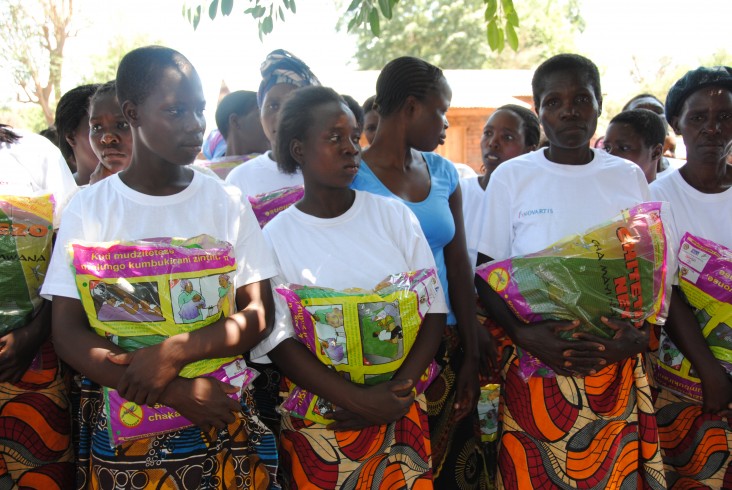Speeches Shim

Over 5,000 Nets Distributed, 10,310 people in Malawi’s Hard to Reach Areas Protected...
There are at least six million episodes of malaria per year in Malawi. The disease is endemic in 95 percent of the country, with 98 percent of infections due to Plasmodium Falciparum, the most severe form of the parasite.
As a result, malaria is the leading cause of morbidity and mortality in children under five in Malawi, and according to 2017 Health Management Information System data, malaria accounts for 25 percent of all outpatient visits and 37 percent of all hospital admissions among children under five.
In 2018, the U.S. President’s Malaria Initiative’s (PMI) VectorLink Project brought indoor residual spraying (IRS) back to Malawi after a six-year absence to reduce the burden of malaria. In some areas, where the burden of malaria is highest, IRS can be too challenging to implement.
The PMI VectorLink Project makes vector control decisions, such as whether to deploy IRS or insecticide-treated nets (ITNs), based on epidemiological, entomological, and cost data to ensure the most vulnerable communities are protected from the burden of malaria.
In Nkhotakota District, where there are remote, hard-to-reach communities located in wetland areas and on islands, the decision to implement IRS vs ITNs requires the consideration of high transport costs and environmental risks. In 2019, PMI’s VectorLink Malawi found that the distribution of ITNs was more financially and logistically feasible on Chauma Island on Lake Malawi and the wetland community of Lupache. With this information, VectorLink Malawi collaborated closely with the National Malaria Control Program (NMCP) and the Nkhotakota District Health Office to plan for the most effective distribution of ITNs in Lupache and Chauma Island. This included community mobilization efforts to disseminate the nets as well as the selection of distribution sites to ensure the most vulnerable people, such as pregnant women and children under five, would be reached.
Advocacy and social mobilization were crucial to ensure the success of the distribution campaign as well as the proper use and care of the ITNs. VectorLink Malawi ensured beneficiaries understood the importance of correct and consistent net use, all year round, while community health surveillance assistants explained proper methods for airing, hanging, use, and care of the ITNs to each beneficiary during the distribution process.
On Chauma Island, VectorLink Malawi used a speed boat carrying village criers to encourage people to go to the distribution site to receive their nets. This led to an excellent turnout of household heads, as people who were in the rice field along the lake received the message, including those who were involved with the fishing industry.
In Lupache, VectorLink Malawi used 4x4s mounted with public address equipment to ensure hard-to-reach areas received advocacy and social behavior change communication messages. The team also used motorbike riders with megaphones, in areas where larger vehicles could not reach, to mobilize the communities and ensure that no registered beneficiaries missed the distribution.
“NMCP is very happy with the distribution of nets in Chauma Island and Lupache,” said Dr. Michael Kayange, Program Manager for Malawi’s NMCP. “VectorLink did a wonderful job. The mobilization was done very well and led to the successful distribution of nets. These areas are hard to reach and the populations have difficulties accessing health care services.”
PMI, with support from the District Health Office and community members, successfully distributed 5,155 nets across the two areas, protecting 10,310 people who are at high risk of contracting malaria.

Comment
Make a general inquiry or suggest an improvement.